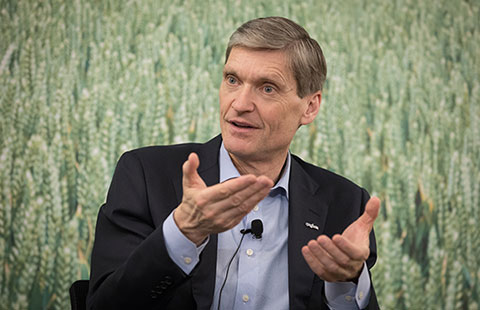Currency reforms to continue
More efforts needed to push for marketization of the yuan's benchmark deposit interest rates in face of speculative capital
The yuan rose 0.77 percent in April and 0.66 percent in May against the US dollar, much higher than 0.26 percent it rose altogether in the previous three months. The April and May rises were also higher than that for the whole of 2012.
The considerable appreciation has been largely attributed to the short supply of the yuan in the foreign exchange market, directly causing a rise in China's newly increased funds outstanding for foreign exchange. The monthly volume of the country's newly increased funds outstanding for foreign exchange was 683.7 billion yuan ($110 billion) in January, 295.4 billion yuan in February, 236.3 billion yuan in March and 294.4 billion yuan in April. The sharp rise in these funds has been driven by both the large-scale influx of international capital and the increased dollar-to-yuan conversions by domestic households and enterprises because of expectations that the yuan will appreciate. Due to a huge surplus in its international payment, China's newly increased foreign reserve in the first quarter was $157.1 billion.
China had strong export performance from January to April according to the official data, but there are extensive doubts about the figures, because there is a lot of evidence proving that short-term capital inflows via transfer pricing or false trade channels have made a large contribution to the 18 percent growth in exports from January to April. According to official statistics, China's trade surplus was $38.6 billion in the first quarter, but the United Bank of Switzerland put it at only $2.4 billion, sound proof that the country's newly increased foreign reserves in the first quarter of this year mainly came from the inflow of capital.
The yuan's higher interest rates than most other currencies and expectations for its continuous appreciation have served as major causes for the cross-border capital influx to China. The easing of concerns that China's economy might suffer a hard landing and the adoption of a new round of monetary quantitative easing by central banks in developed countries have also caused the flow of large volumes of short-term capital to emerging markets like China. The rapid rise in value of the yuan in recent months has also been closely related with reduced interventions from China's central bank into its foreign exchange market. The monetary authorities have instead chosen regulation of the yuan's central parity rate as the main way to regulate its exchange rate.
Reduced interventions into the yuan's exchange rate by China's central bank are aimed at coordinating the planned policy of expanding the range of the yuan's daily fluctuation against the dollar and the Japanese yen. Allowing a rapid rise in the yuan prior to the adoption of such a policy will possibly help reduce expectations for its further appreciation and facilitate earlier two-way fluctuations after the policy is adopted. It is also believed that the yuan's appreciation prior to the upcoming Sino-US Strategic and Economic Dialogue will reduce the possibility of the US using the yuan's exchange rate as a bargaining chip. At the same time, a strong yuan in the context of lingering weakness among other currencies will also facilitate China's push for internationalization of the yuan.
However, there is only a slim possibility that the yuan will be able to maintain its current dynamic appreciation momentum. The yuan is expected to slow its pace of appreciation in the latter half of this year, and will likely stay at 6.10 to 6.15 against the dollar at the end of this year. With a continuing slump in external demand, a continuous rapid rise in the yuan's effective exchange rate will have fierce repercussions for the country's struggling export sector. At a time when there is no big space for domestic investment expansion, exports will be still viewed important to national economic growth. Dampened exports will also add pressures to the already-lackluster domestic employment market.
Recent measures taken by China's central bank to keep its hands away from the yuan's central parity rate are praiseworthy, but questions have been raised over the timing. If the central bank had followed the trend of the yuan's depreciation last year and allowed for its bigger depreciation, there would have been a bigger space for the latest round of appreciation.
Given that the ratio of China's current accounts to its gross domestic product now remains within a reasonable range, a larger range for daily fluctuations of the yuan and reduced interventions into its central parity rate will likely cause excessive adjustments to its exchange rate. To avoid this, the central bank should postpone implementing its plan to expand the range and strengthen management of the yuan's central parity rate.
A series of policies adopted by the Chinese government aimed at strengthening monitoring and management of short-term capital flows, especially capital inflows via trade channels, are expected to slow the pace of speculative capital flows to China in the future.
Despite the substantial progress China has made in reforming the yuan's exchange rate formation mechanism, continuous efforts are still needed, especially efforts to push for marketization of the yuan's benchmark deposit interest rates. A tightened regulation of its benchmark interest rate will hamper the yuan's exchange rate marketization drive.
However, China should continue putting in place moderate capital account regulations before establishing a marketized interest rate and exchange rate mechanism for the yuan, in a bid to avoid repercussions to its economic growth and financial stability caused by possible large-scale short-term capital inflows and outflows.
The author is deputy director of the Institute of World Economics and Politics with the Chinese Academy of Social Sciences.



















